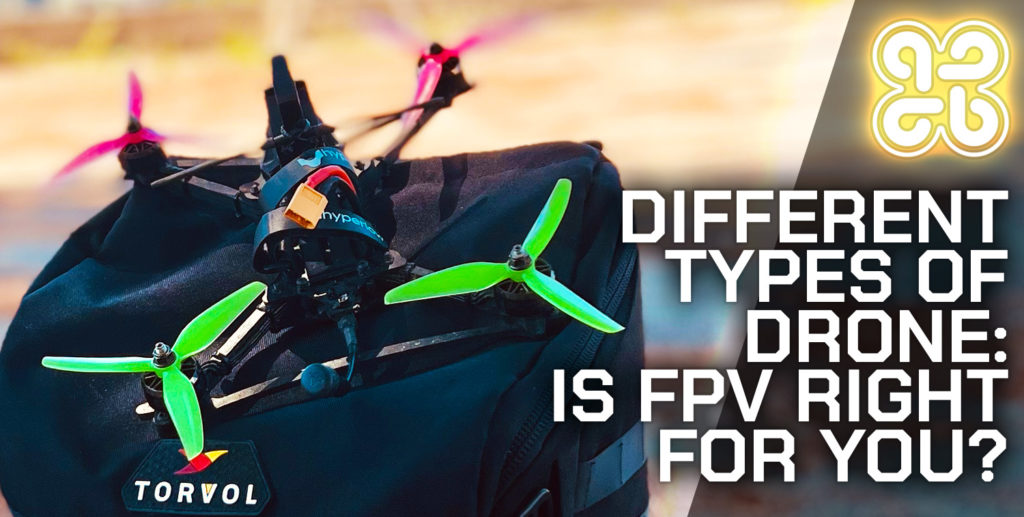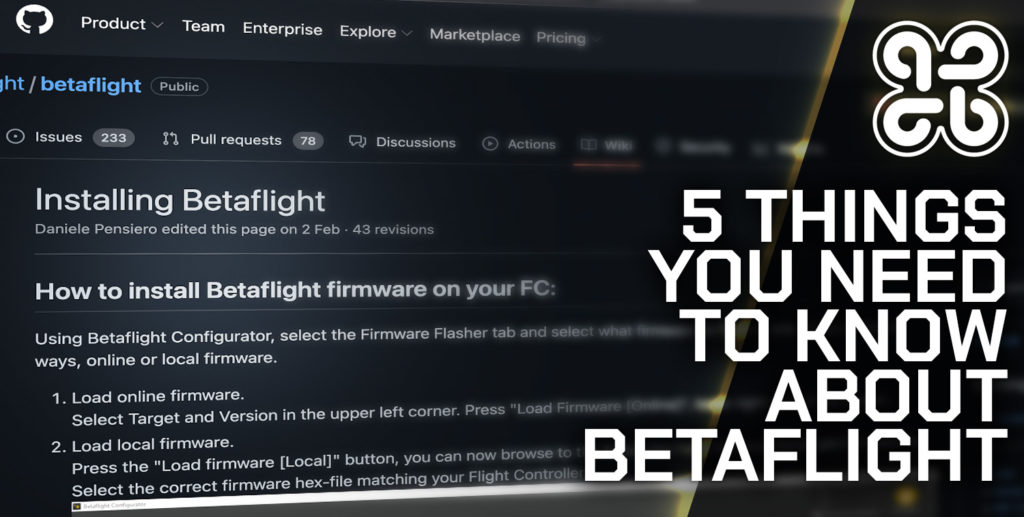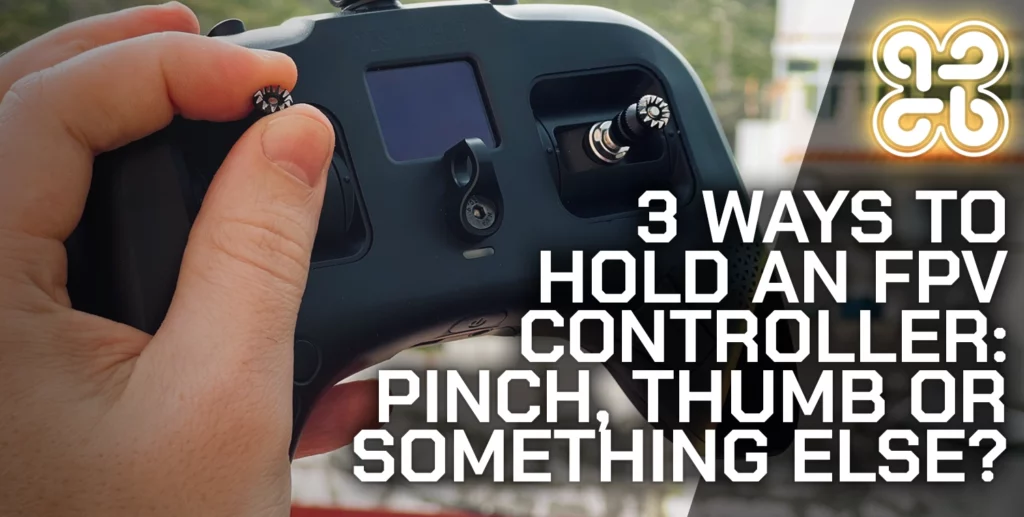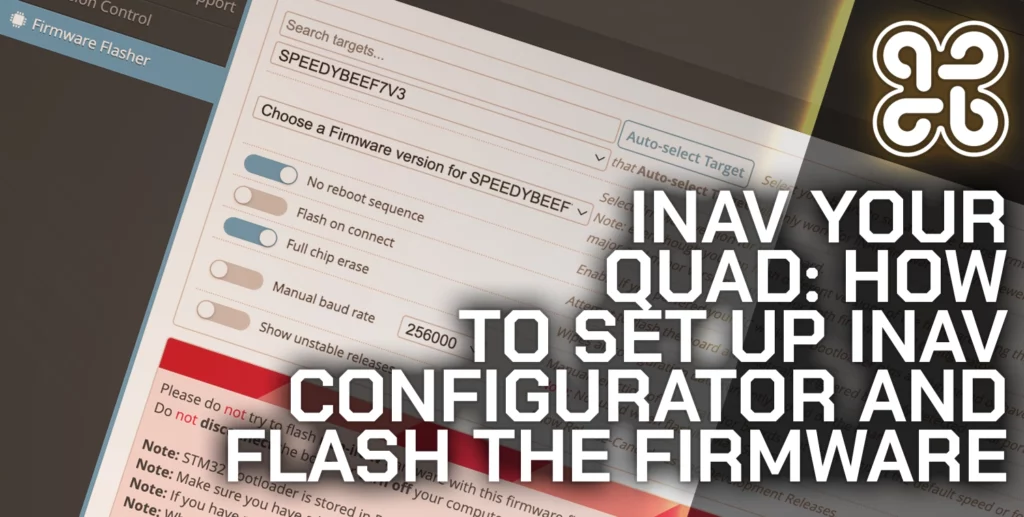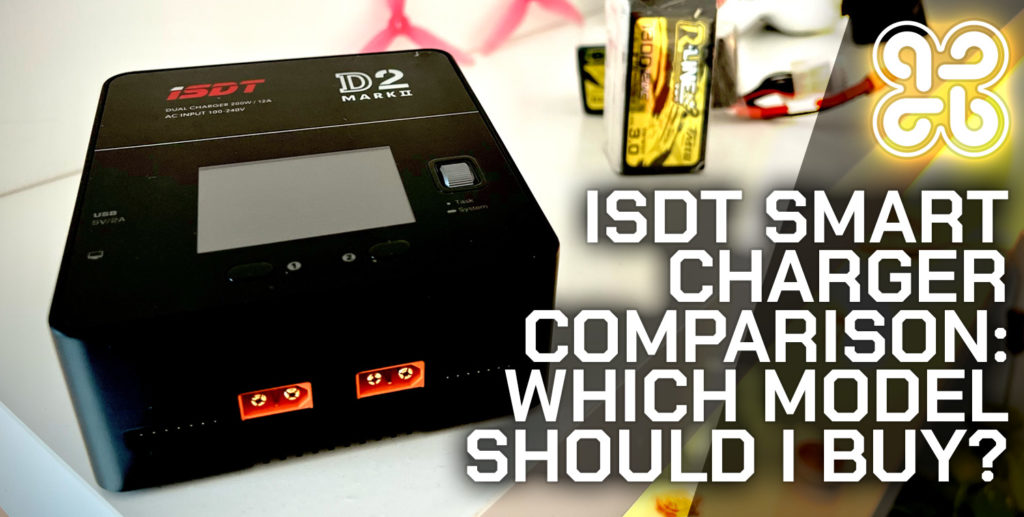So, you are thinking of getting your first drone? An excellent decision, quadcopters can enrich your life in so many different ways!
But with all of the different types of drone on the market, how do you know which one is right for you? Where is the best place for a new pilot to start? Well, we can start by answering that question…
A good starting point would be to ask yourself the question, what would I like to achieve with my drone? You might come up with one or more of the following answers:
- To take part in drone racing events.
- To make stunning aerial photos.
- To make slow cinematic movie scenes.
- To learn how to perform aerial stunts and tricks.
- To produce fast-paced cinematic video.
- To fly with friends in interesting locations.
This is not an exhaustive list, maybe you have some other interesting drone ambitions, or you may even be interested in several of those pursuits!
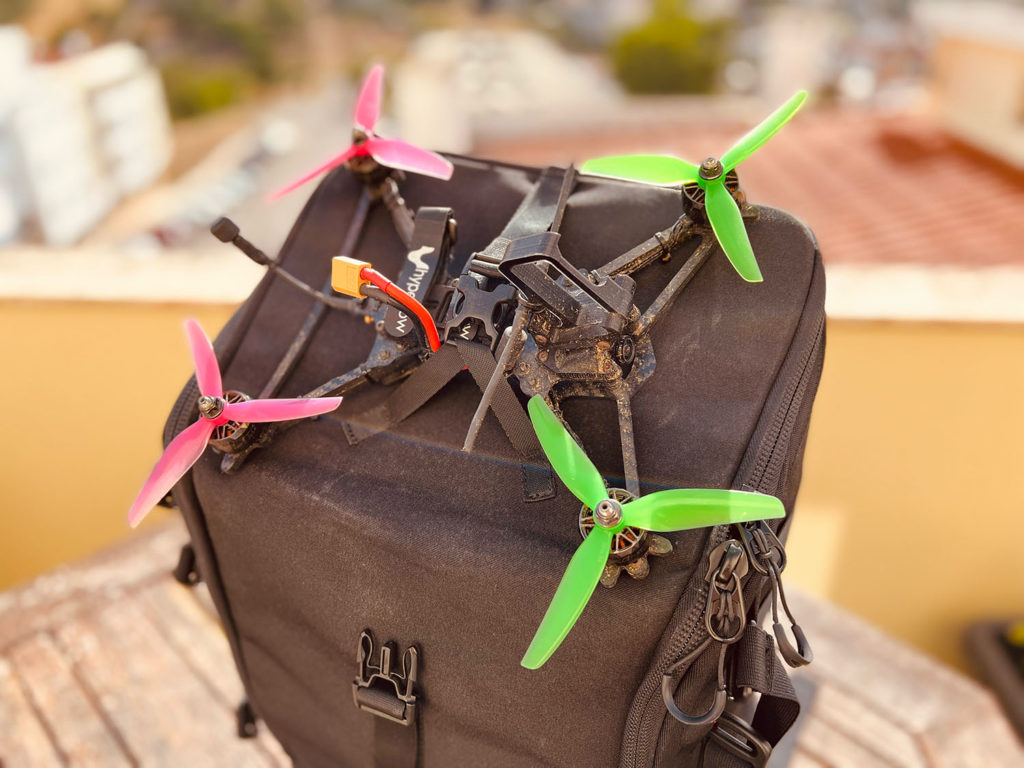
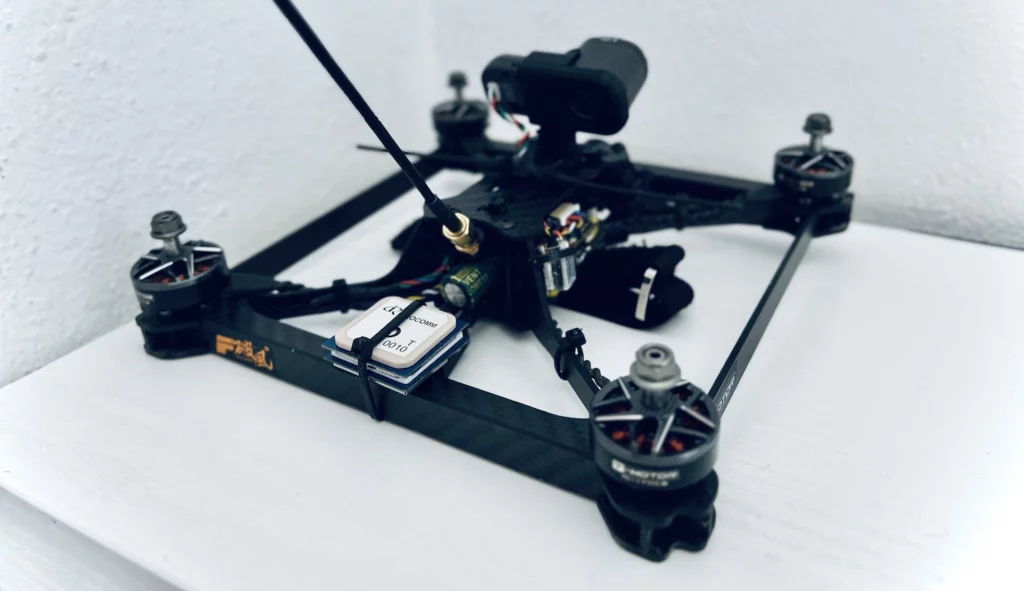
Not all quads are built the same. For example a freestyle FPV drone is a very different beast to a consumer offering such as the DJI Mavic Mini.
Both of these drones have completely different purposes even though there are similarities in the way that they look.
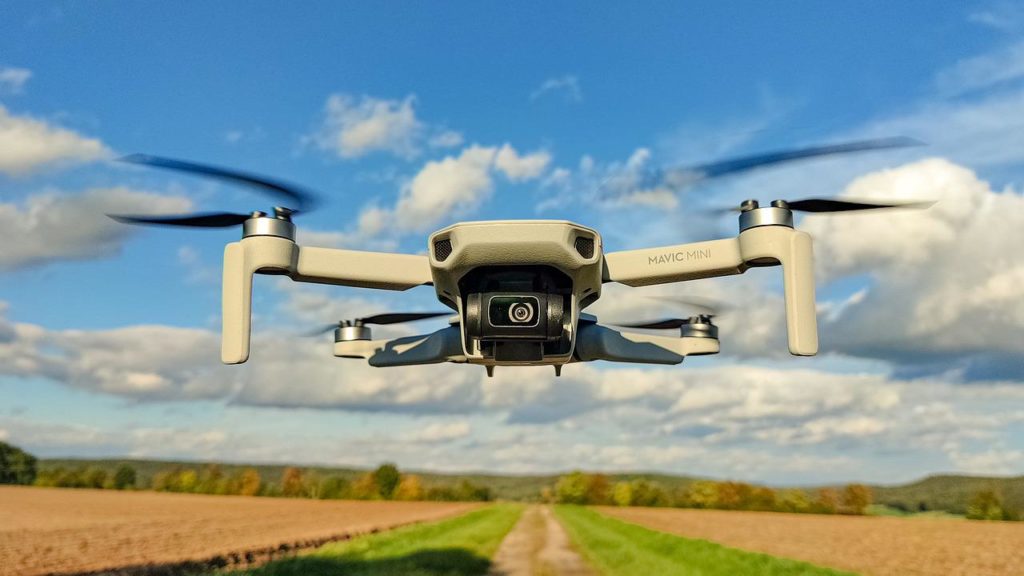
Both of these drones are actually good representations of two very different paths that you can take when choosing a drone.
Should I Buy an FPV Drone or Consumer Drone?
It is likely that you will find yourself either taking an interest in FPV multirotors or consumer photography drones. For simplicity we shall refer to these as FPV Drones and Consumer Drones respectively.
If you are still unsure which of those two paths would be right for you, the following information may be of assistance:
FPV Drones
- Fits into the world of radio control hobby enthusiasts.
- Exhilarating to fly, fast, loud and powerful.
- Often assembly is DIY, however pre-built models are available too.
- Manual control, requires practice and skill to fly.
- Autopilot functions do exist but are less common.
- Almost always flown using FPV goggles.
- Always flown using an RC radio.
- Analog and digital models available, pros and cons to each.
- Many different sizes available from “toothpick” to “macro.”
- 3 inch to 5 inch sizes most common.
- Built to survive crashes, almost always carbon fibre.
- Battery life and range varies a lot depending on the build.
Suitable uses:
- Recreational park flying.
- Drone racing events.
- Faster cinematic video production.
- Freestyle flying / acrobatics.
- Fast action video production.
- Ultra-long range flying.
- Often used for pro video production.
Consumer Drones
- Consumer products that can be bought off the shelf at many retailers.
- Very easy to use, can be flown by almost anyone.
- Many safety features and autopilot capabilities.
- Flown with proprietary stick remote controllers.
- Usually flown using a video screen, either a mobile phone display or screen built into the controller.
- Some models can now also be flown with goggles.
- Digital models only.
- Biggest name in the industry is DJI, who offer several different models.
- Build quality is consumer grade.
- Often very portable, can be folded and packed into carry cases easily.
- Great battery life and range out of the box.
Suitable uses:
- Recreational park flying.
- Still aerial photography.
- Slow sweeping/panning aerial video shots.
- More expensive models can be used for pro video production.
In general I usually think of consumer drones as a product for photographers and videographers, who are not necessarily interested in drones per se, but just want the stunning shots that they can produce.
If you want to make breathtaking cinematic aerial video or take incredible aerial photos without the hassle of a steep learning curve then consumer drones are the right choice for you.
However don’t forget that consumer drones can be purchased and flown by anyone. With a little YouTube tuition, anyone can make stunning video with a Mavic.
FPV drones are a whole different beast! Not only does it take a long time to become a skilled pilot, but you must also learn a whole host of other skills, such as soldering, in order to get the most of out it.
If you are thinking commercially, putting the work into learning to become a skilled FPV pilot can make you far more valuable because it is not possible to achieve those results simply by purchasing an off the shelf product.
However if you just need good quality aerial photos, for example if you are a real estate agent who needs aerial pictures of property, consumer drones are absolutely the best choice.
Different Types of FPV Drones
In the previous section we have discussed the difference between consumer drones and FPV drones.
At this stage you should have a good idea as to whether or not you would like to pursue FPV as a hobby, or whether a consumer drone is the right choice for you.
If you want to pursue the consumer drone route then you might want to check out some guides such as this one, which are more focused on this type of product.
Here at NoirFPV I aim to specialise in FPV drones and FPV drone technology. Therefore this article will continue to take a look at the different type of FPV drones that are available.
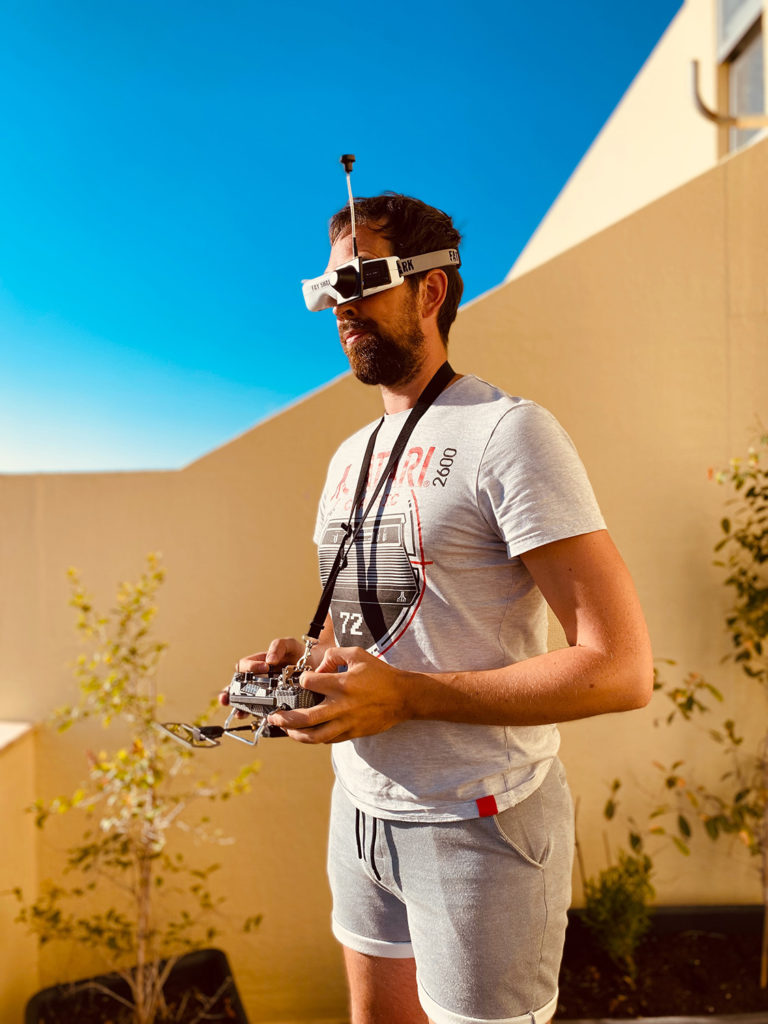
So if you have come this far and you are looking to get into FPV drones then I congratulate you!
The learning curve can be steep at times but it is absolutely worth it. Flying a fully manual FPV drone with raw power is extremely exhilarating!
So let’s take a look at some of the various types of FPV drone that are available.
What is a Freestyle Quad?
Freestyle flying involves performing a series of aerobatic stunts that look visually pleasing.
Freestyle pilots often use a high definition camera to record flights and aim to produce the smoothest and most aesthetically pleasing video possible.
Freestyle pilots will often use the surrounding environment to enhance aerobatic maneuvers, such as flying through a gap in a wall whilst performing a roll.
Abandoned buildings are very popular for freestyle flight as they provide many obstacles that can be used to enhance aerobatic maneuvers.
A freestyle quad is not dissimilar to a racing drone, however it is specifically designed for this type of flying.
Freestyle drones often use a 5 inch frame. This type of frame is compatible with propellers that have a 5 inch diameter.
However it is not uncommon to see smaller 3 inch frame designs. This type of frame has several benefits due to its small size, but it usually thought to have inferior handling and can struggle to carry a full-sized HD camera.
This size is a perfect choice as it is large enough to carry a good high definition camera, such as a GoPro, whilst still being small enough to fly through tight spaces.
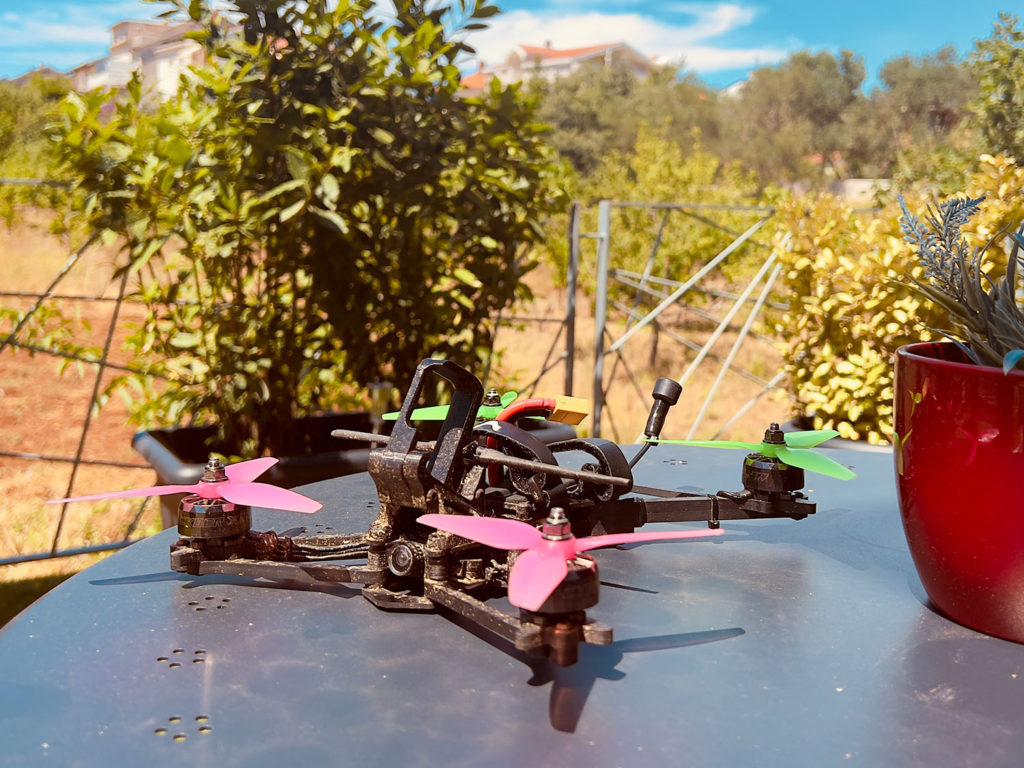
Although it would technically be possible to use a racing drone to fly freestyle, it is better to use a specific freestyle frame that has the following characteristics.
- Frames are designed with emphasis on strength and reinforcement.
- Motor positions prioritise keeping propellers out of the view of the high definition camera (at the expense of using the optimum X configuration with even proportions).
- Pilot cameras are often well protected, sometimes with a metal cage.
- The frames incorporate a GoPro mount or similar in order to attach a high definition camera.
- Batteries are mounted top-side so the props line up with the center point for best balance.
- Pilot cameras are mounted with less of an angle to prioritise control over speed.
Freestyle flight is incredibly good fun! It provides a lot of excitement when flying using immersive FPV goggles and there are many different places that you can fly freestyle.
If you are getting started with FPV drones and you don’t intend to jump directly into racing, my recommendation would be to start with a 5 inch freestyle drone.
I would always recommend building your own drone for freestyle. It will teach you vital skills that will be incredibly valuable in certain situations, such as when you need to repair your drone.
However if you just want to start flying without the hassle of building a drone, you purchase a pre-built drone, no soldering necessary!
This type of drone is called a bind-n-fly (BNF) because you only need to bind it to the transmitter, then fly.
So what are you waiting for! The next step is to find out which 5 inch freestyle drone is best for you!
What is a Racing Drone?
A racing drone is probably the most self-explanatory drone on this list. A racing drone is of course for racing!
Just like with other types of racing the goal of drone racing is to be quicker than your rivals.
Racing drone tracks are three dimensional and usually include a series of ‘gates’ that the pilot must fly though in order to progress along the course.
Drone racing is huge and is now an international sport! For more information you can check out the The Drone Racing League (DRL), who host racing all around the globe.

Drone racing is also very popular at a national and local level. Racing drones used in these events are specifically designed for racing, with characteristics such as the following:
- Frames are primarily designed to be light in order to be quick, although durability is also a consideration.
- Frames adopt a true X configuration with motors evenly spaced for uniform handling and response.
- There are usually no mounts for a HD camera, this would be an unnecessary weight to add.
- Batteries are mounted on the bottom to allow smaller and lighter frame design, plus improved aerodynamics.
- Pilot cameras have a very steep angle to maximise speed.
Like with freestyle drones the most popular size of frame is the 5 inch frame size. However there are other sizes available.
For example X-class racing drones were developed in order to give spectators a show. These are absolute beasts!
Before we get too carried away, let’s return back to the most common size of racing drone, the 5 inch.
If you are looking to get into racing then I would absolutely recommend starting with a 5 inch racing drone frame.
I would always recommend building your own drone for racing. It will teach you vital skills that will be incredibly valuable in certain situations, such as when you need to repair your drone.
However if you just want to start flying without the hassle of building a drone, you purchase a pre-built drone, no soldering necessary!
This type of drone is called a bind-n-fly (BNF) because you only need to bind it to the transmitter, then fly.
So what are you waiting for! The next step is to find out which 5 inch racing drone is best for you!
What is a Cinewhoop Drone?
So far we have covered freestyle and racing drones, both of which put a lot of emphasis on the actual flying of the drone. These drones are flown primarily for the enjoyment of flying.
However there is another class of drone which leans more towards being a tool for video production, but does not belong in the consumer market.
This type of drone is known as a Cinewhoop and it takes the benefits of a freestyle drone and puts them into a package that is more suitable for producing pro video.
Cinewhoops can produce video that is just not possible to make with a consumer drone due to the piloting skill required to fly one.
The quality of the video depends on the camera used, but when using something like a GoPro the quality rivals that of a high end consumer drone.
Cinewhoop drones are often used in professional environments, even Holywood movies!

Cinewhoops began as a ducted propellor design, however it is difficult to engineer this to actually produce a benefit.
The propellor ducts proved far more valuable as guards, allowing pilots to feel more confident getting closer to the action.
The modern Cinewhoop is very similar to a freestyle drone in that it carries a HD camera and is flown in fully manual mode.
The ducted design is still commonly used, although it is almost always for aesthetic reasons (and as a prop guard) because designs never feature a tight enough gap between the blades and the duct.
However it is common to use a 3 inch propellor size in order to accomodate propellor guards in the same overall dimensions. Some other common features are as follows:
- Frames usually accept an AIO flight controller and electronic speed controller printed circuit board, rather than two separate modules, in order to save weight.
- Frames feature smaller 3 inch propellers in order to accommodate guards in the same space.
- The overall design is optimised for carrying a high definition camera, such as a GoPro or naked GoPro.
- Motors used tend to be shorter and wider
The Cinewhoop will not win any awards for speed, performance or aerobatics. It is designed to be a slow flying and stable platform with added safety.
If your goal is to make cinematic video that is way beyond what is possible with a consumer drone, the Cinewhoop is certainly the way to go.
What is a Long Range Drone?
Long range drones come in various shapes and sizes. Commonly they are built using larger frames such as one that supports 7 inch props. However smaller 4 inch platforms have recently become popular too!
Long range drones tend to share many similarities with freestyle drones. However they feature some extras in order to make them compatible with long range flight.
- Features a HD camera mount at the front of the frame.
- Squashed X or ‘dead cat’ configuration keeps props out of the view of the HD camera.
- Batteries mounted on top (and also the bottom for ultra-long range flights).
- Built to be durable and carry a large amount of electronics.
- Plenty of options for antenna mounting, which is more critical for long range.
- Features mounting for a GPS (and optionally a compass) module.
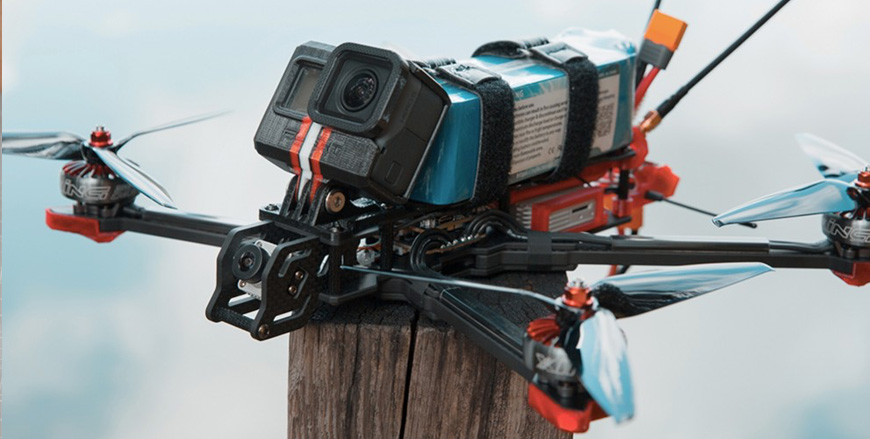
The main aim of a long range drone is to be able to fly further away. Limitations include battery life and radio range (as well as local laws and regulations).
Flying long range is a challenge and is not for the faint hearted. Losing your (expensive) rig at any moment keeps the adrenaline high!
Some pilots are hardcore ultra long range enthusiasts who focus only on achieving longer range. The range achieved becomes the metric in which to compete.
Other pilots make use of the additional range to make stunning long range and fast paced aerial video not possible to make with a consumer drone.
Long range FPV videos often feature beautiful scenery and as a result, the pastime of ‘mountain surfing’ has been born.
Long range is certainly the most technically challenging type of flying but the end results can be incredibly rewarding both in terms of the achievements and the video that can be produced.
However I would highly recommend progressing to long range flying after gaining some experience with any of the other previously mentioned drones first.
Conclusion
There are certainly a lot of choices when it comes to beginning your FPV journey!
Whether you want to race, perform aerobatics or make beautiful video, there is no doubt that you will find FPV an incredibly exciting experience and very enjoyable to learn.
I hope that this article helped you better understand some of the different drones that you could choose and has given you some inspiration!
Once you have a good idea of the kind of drone you would like to invest in, a good next step would be to understand a little more about the flight controller software on offer.
The most common choices are either Betaflight, Kiss or iNAV.
Or why not go ahead and check out some more of my beginner FPV articles.

